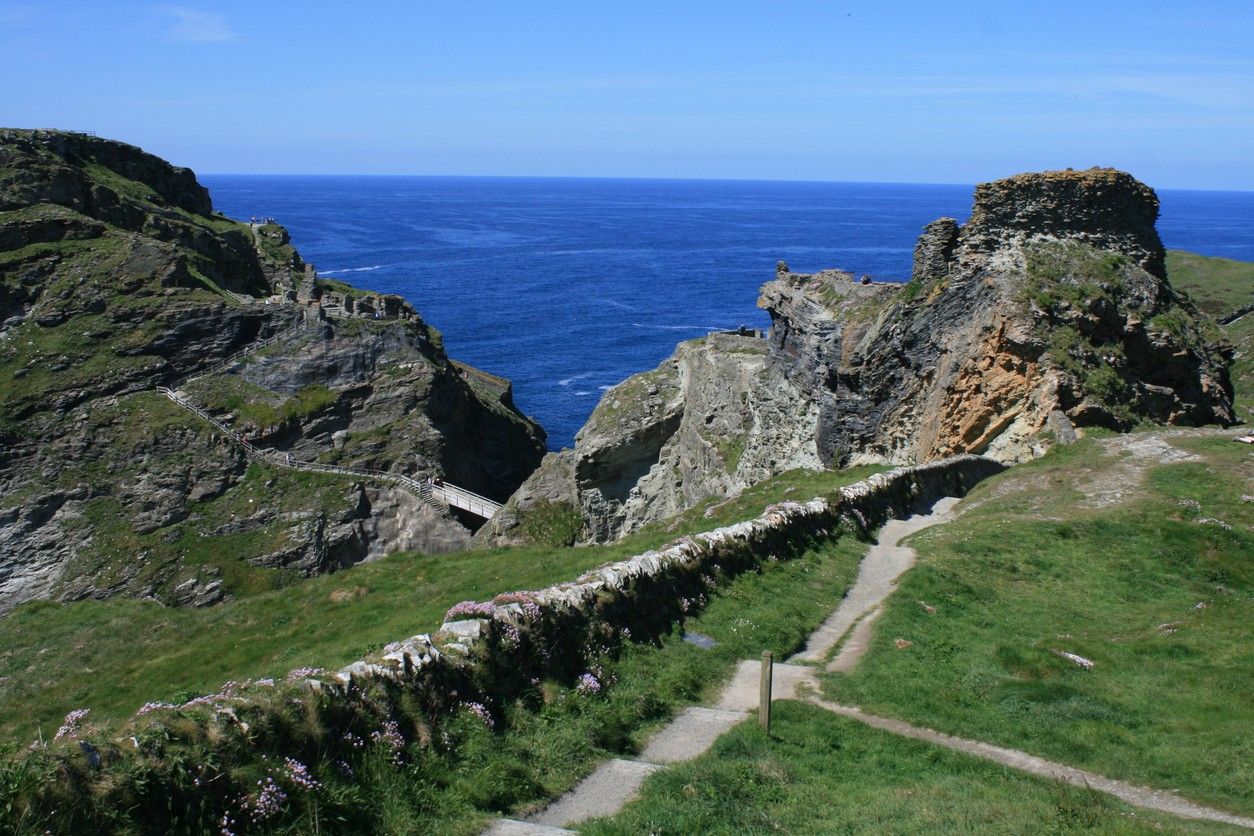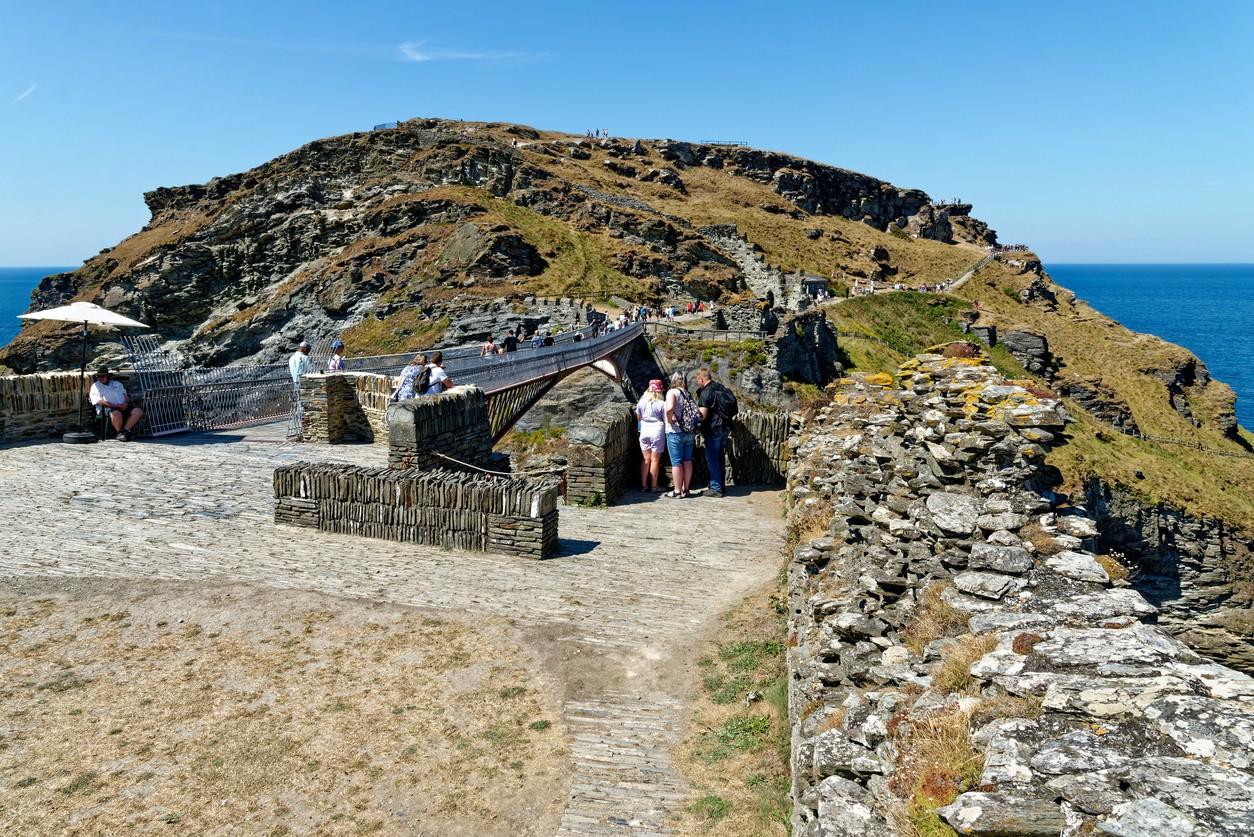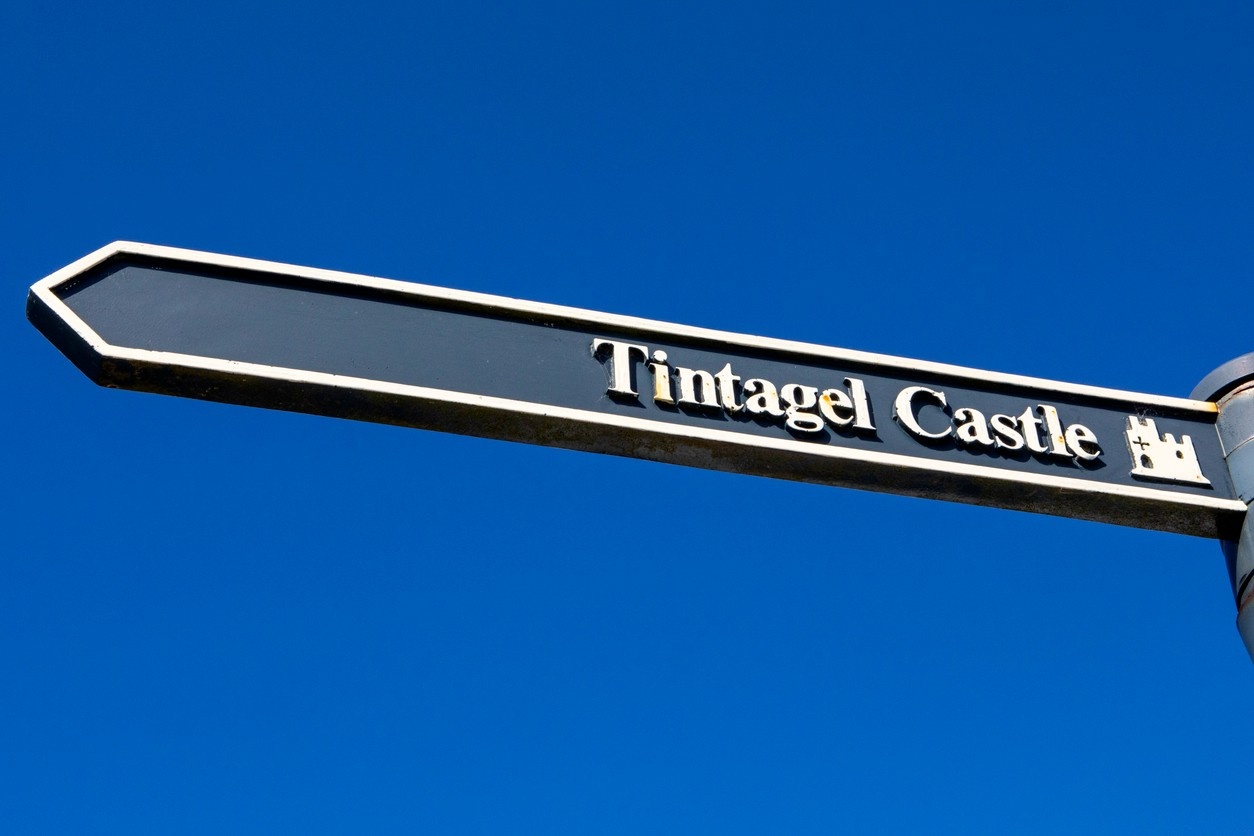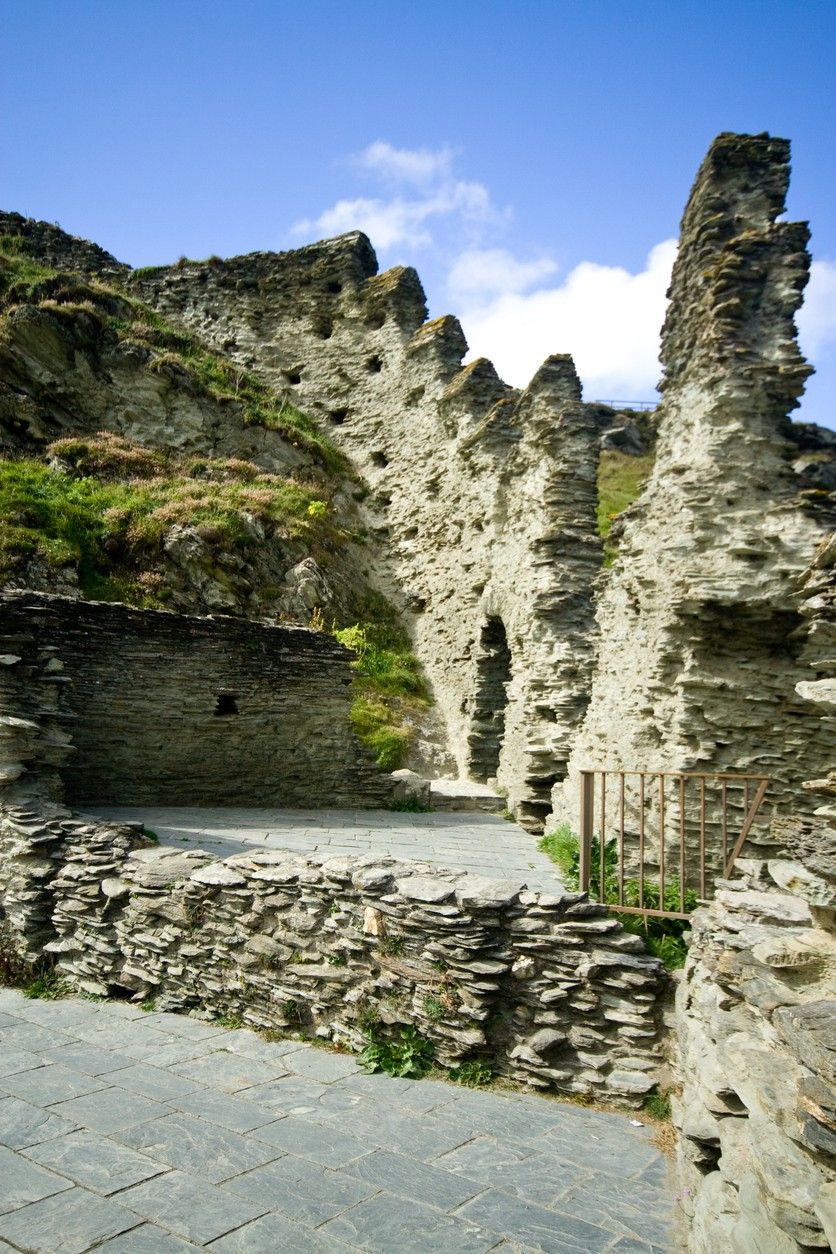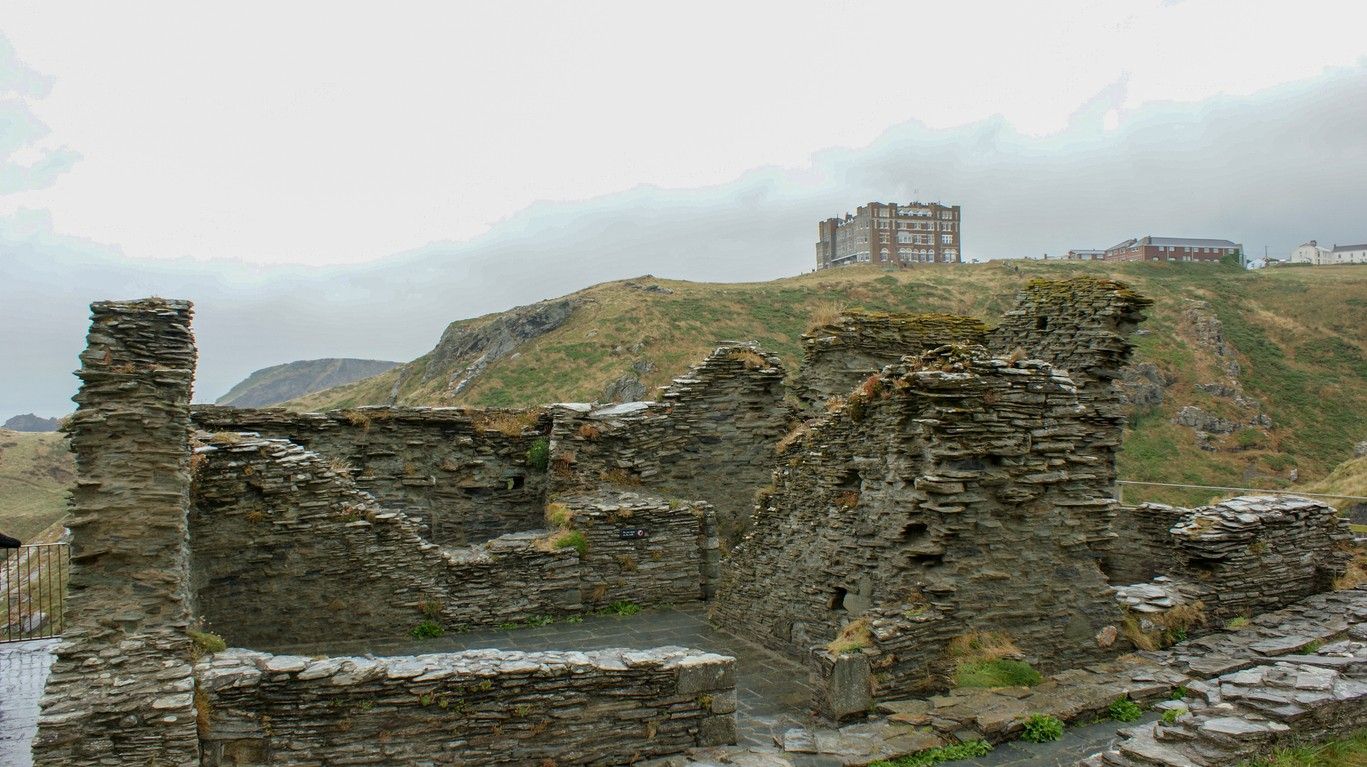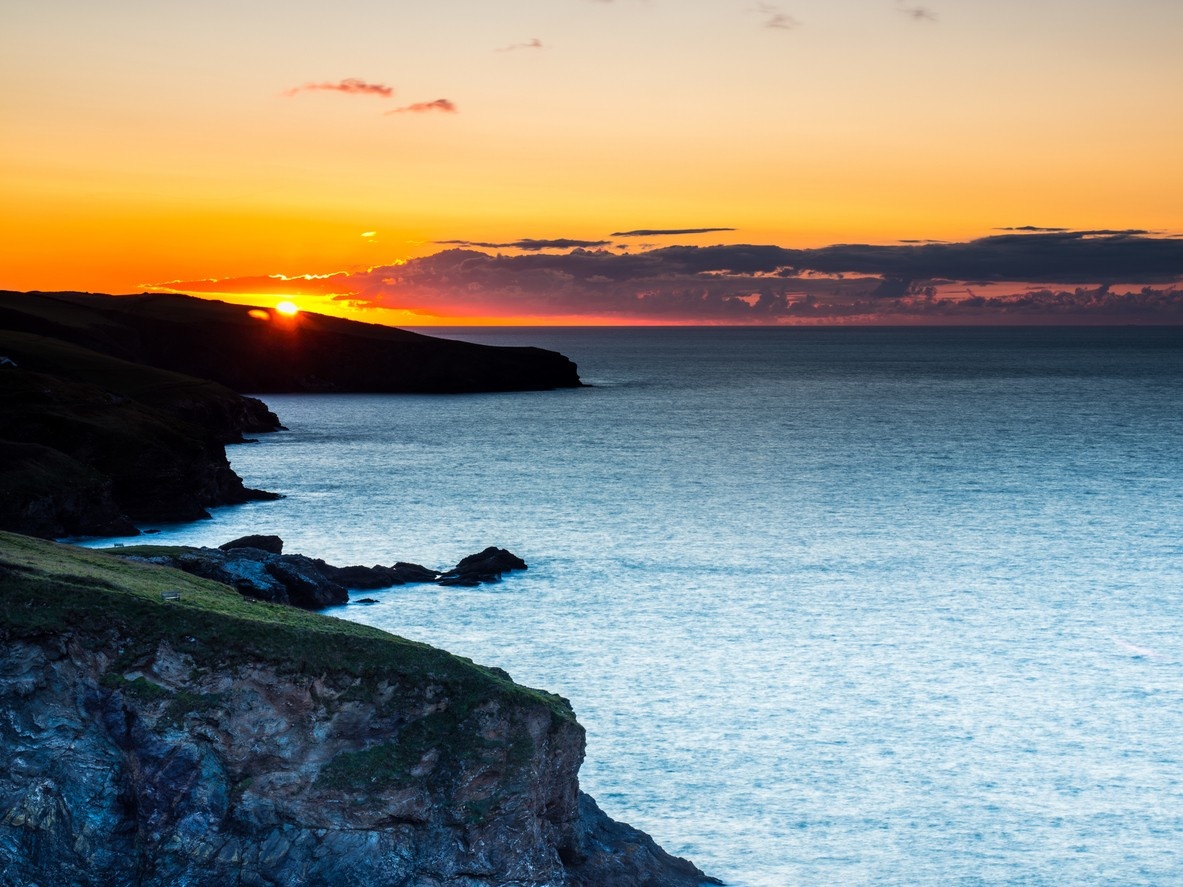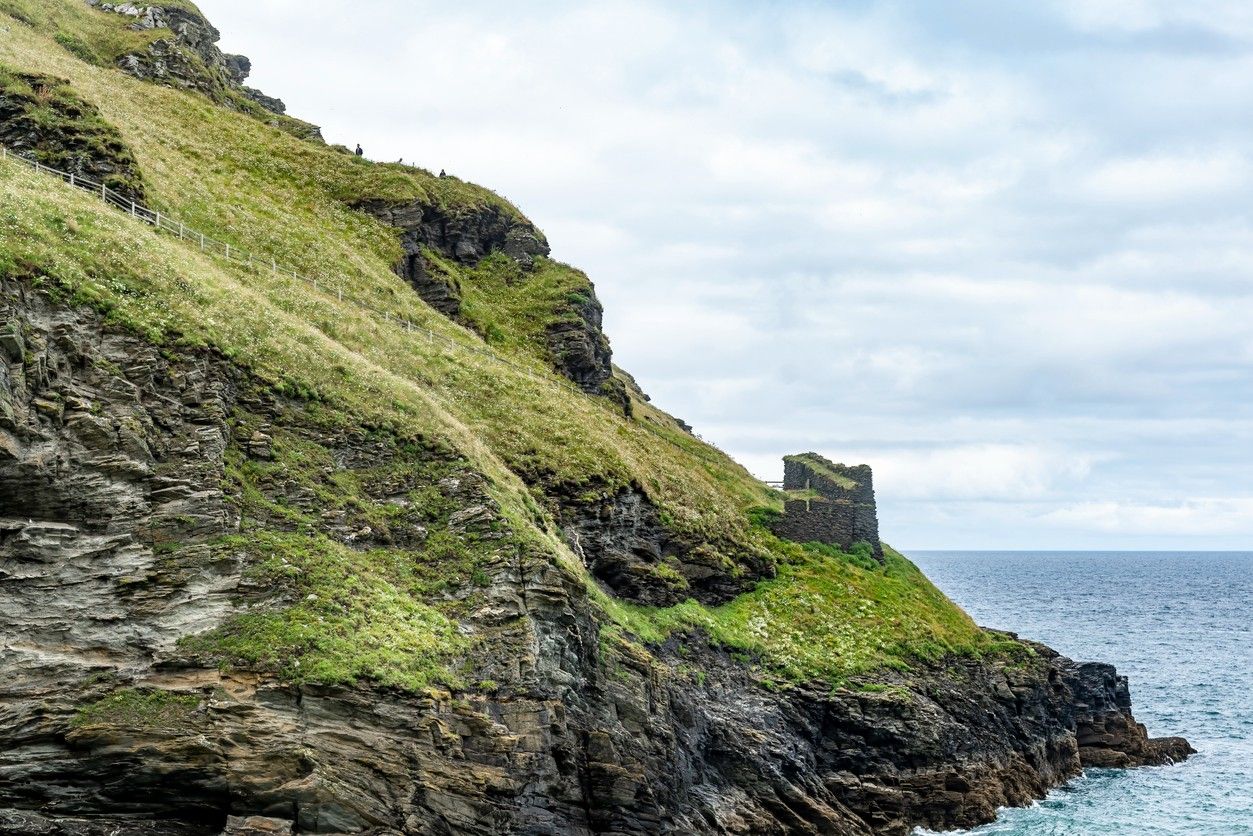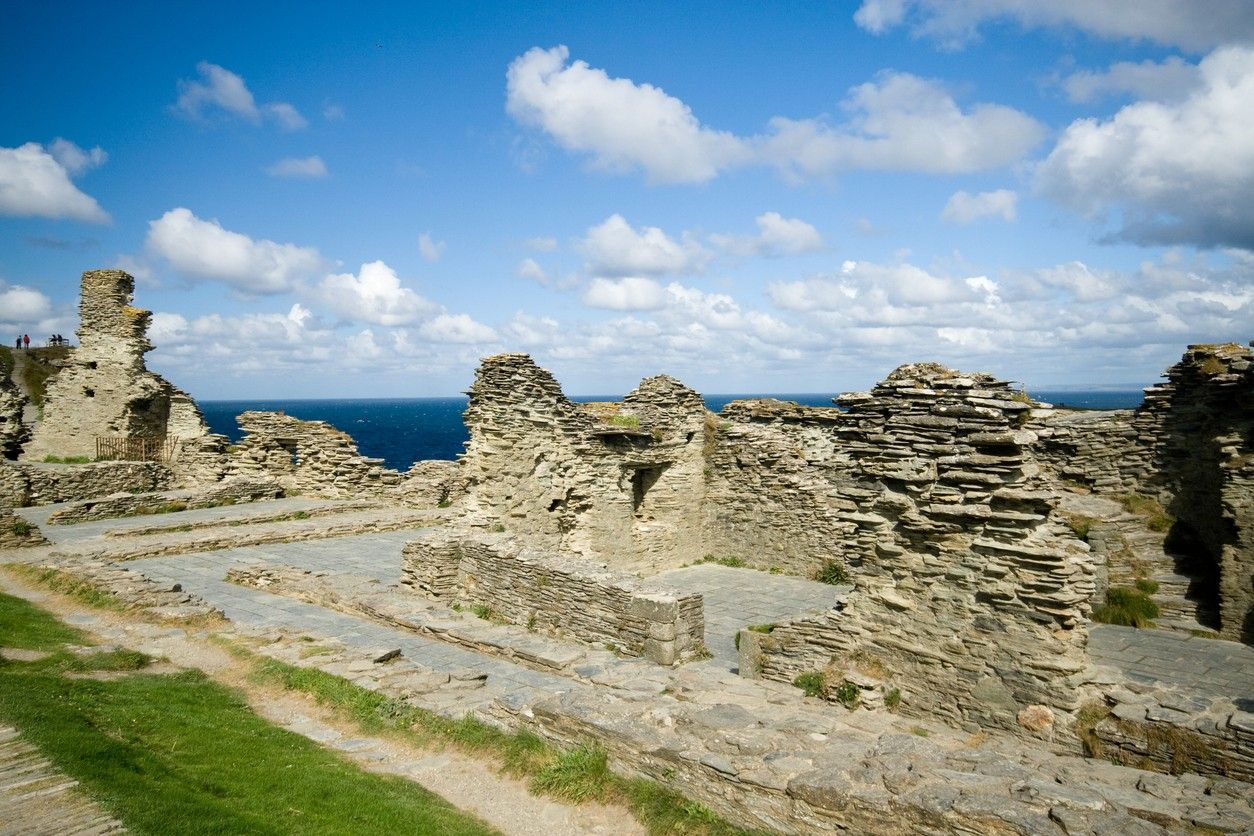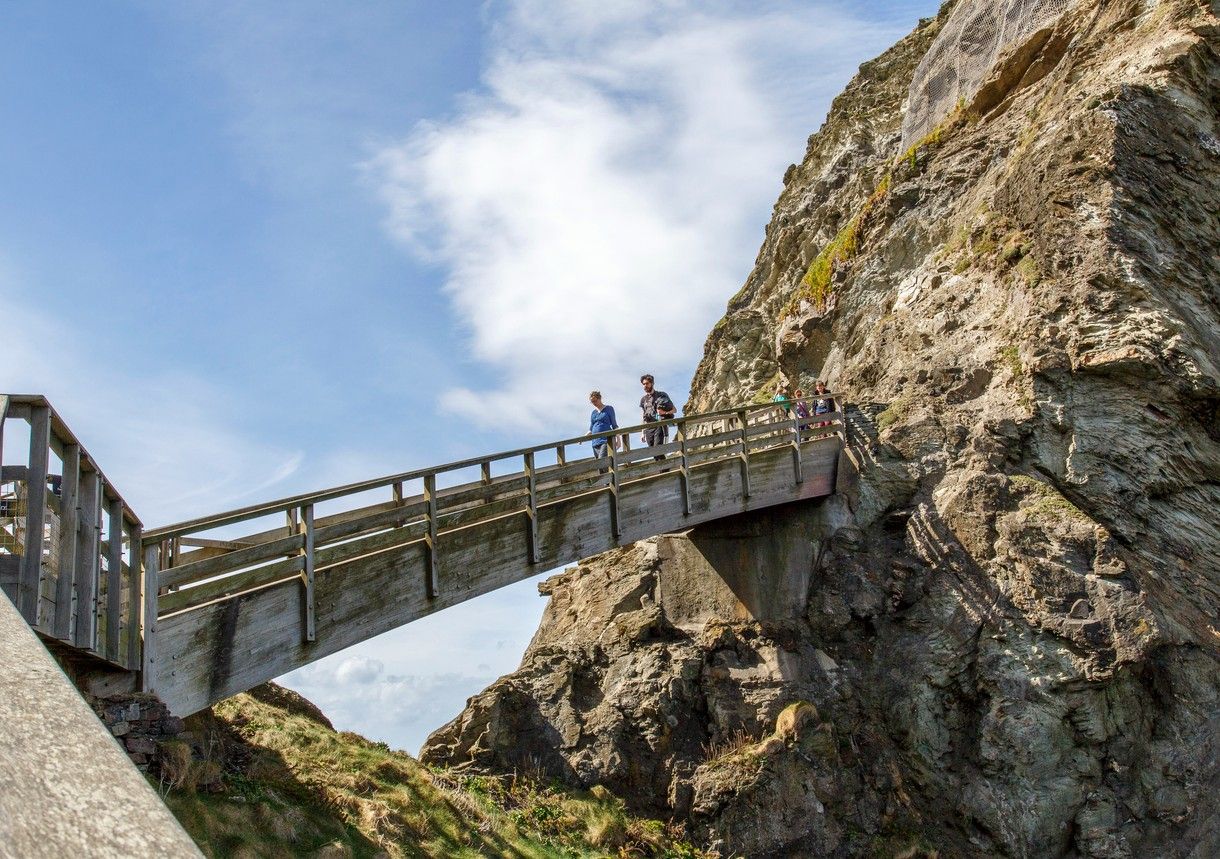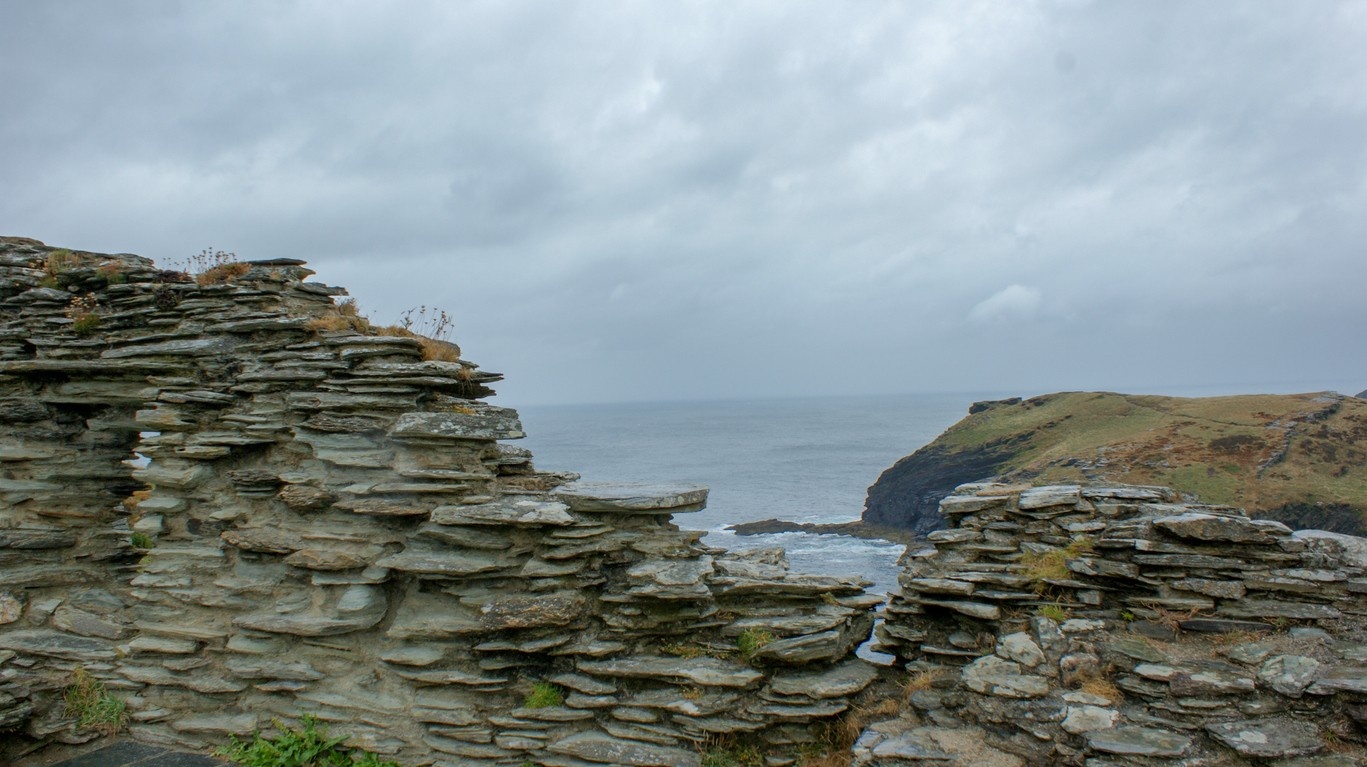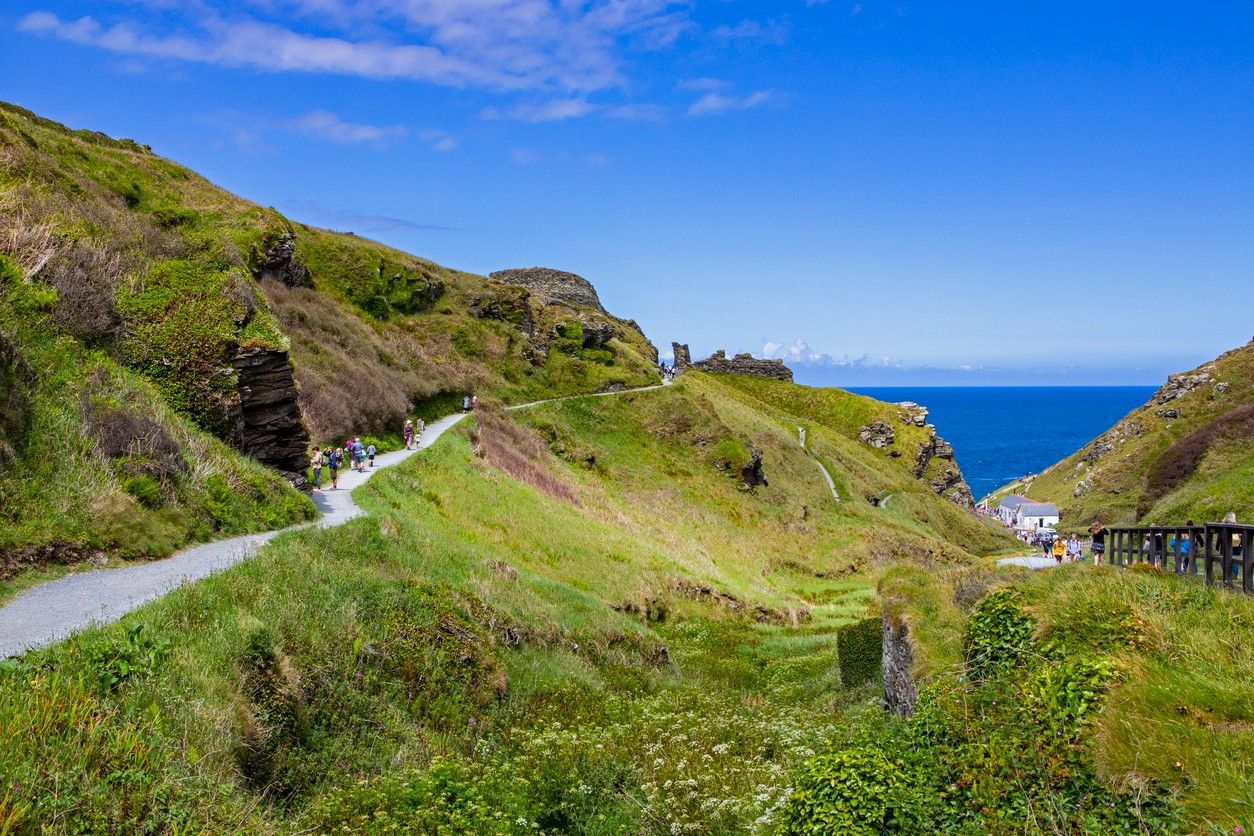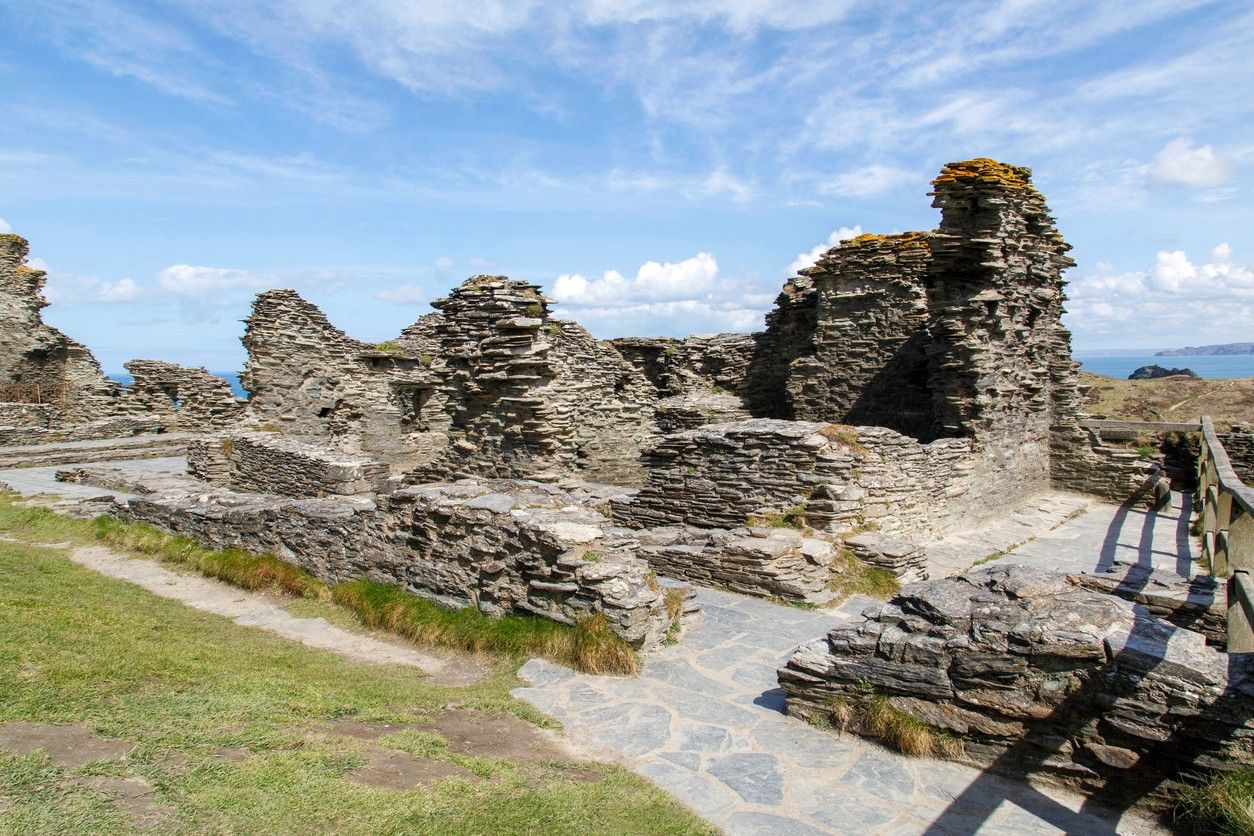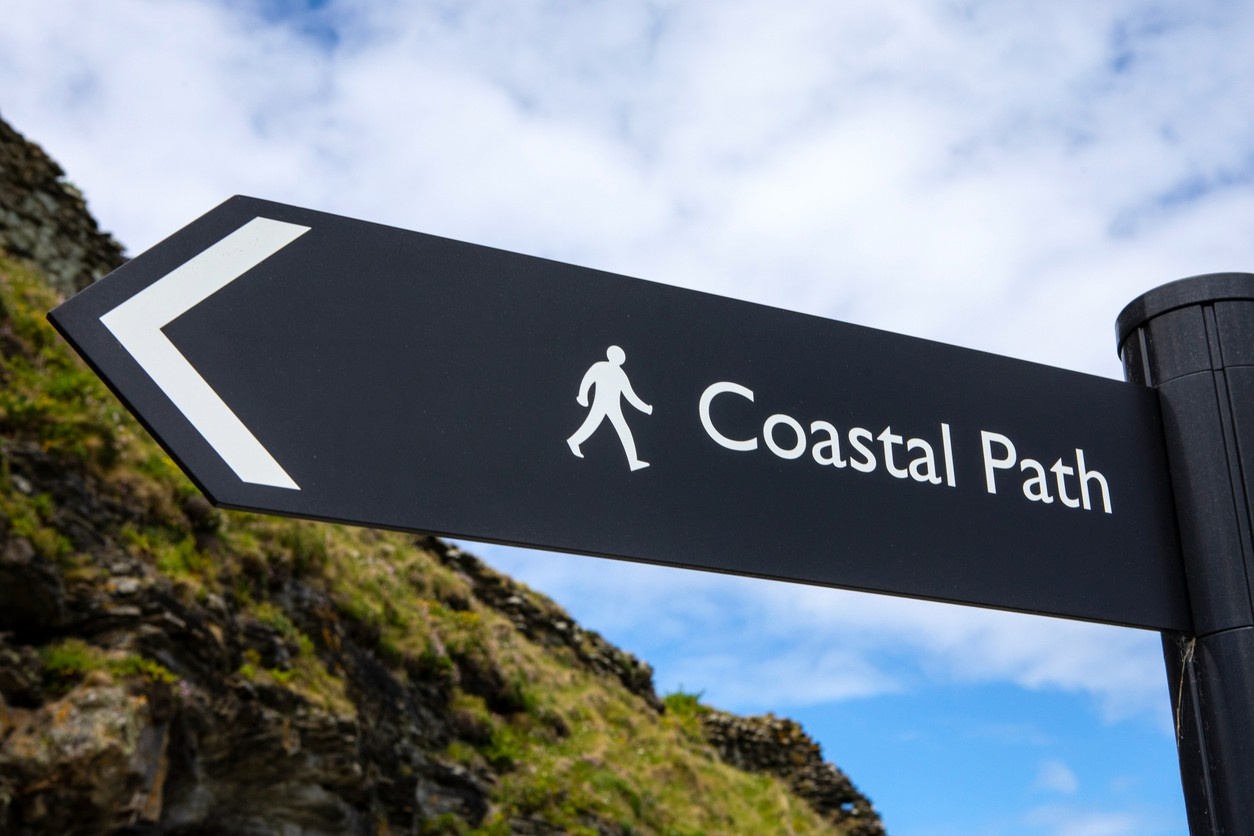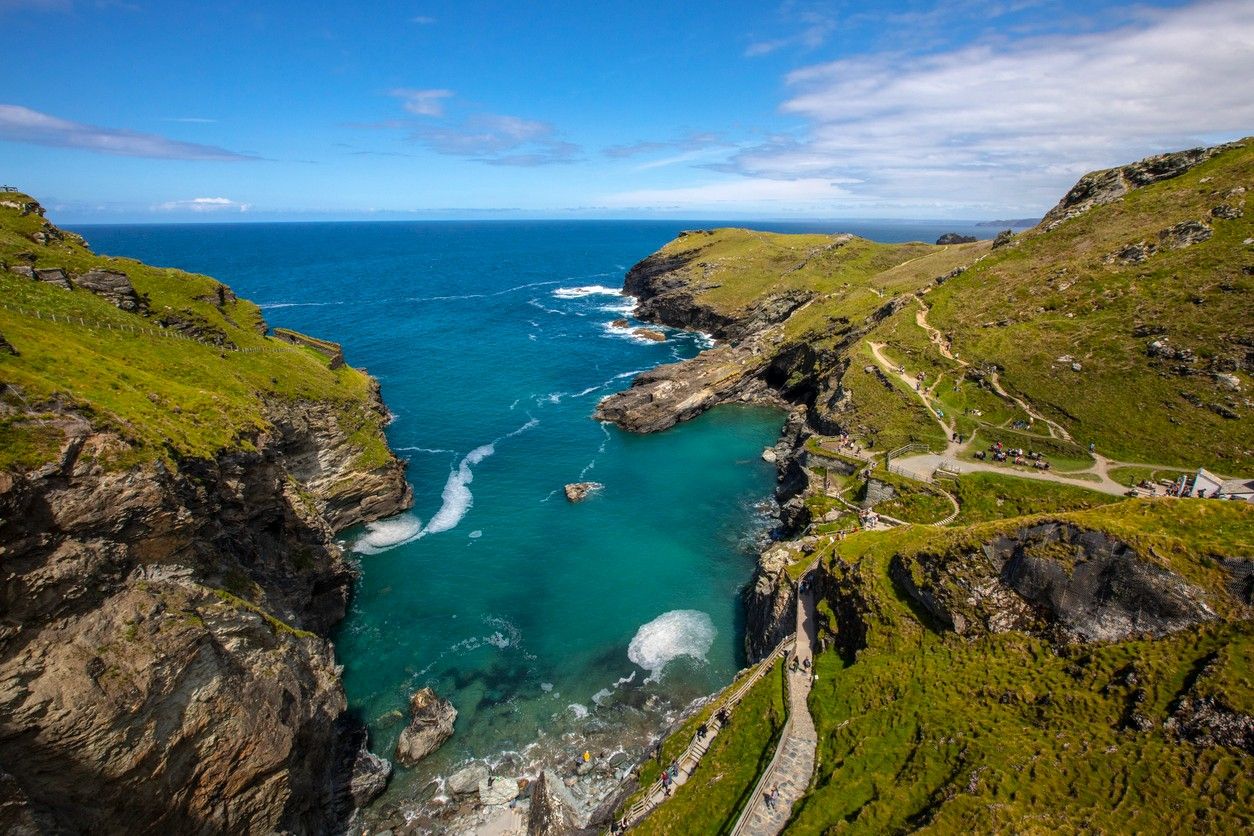Tintagel Castle
Tintagel Castle is a captivating medieval ruin that has long captured the imagination of visitors from around the world. Nestled along the rugged Cornish coastline of England, this iconic landmark is a testament to the rich history, stunning natural beauty, and enduring mythical associations that have made it a beloved destination for centuries. From its possible connections to the legendary King Arthur to its role as a thriving medieval trading hub, Tintagel Castle's past is a tapestry of intrigue and cultural significance. The site's evocative ruins, dramatic coastal setting, and enduring mythical associations all contribute to its enduring allure, drawing in visitors who are captivated by the opportunity to immerse themselves in the magic and wonder of this remarkable place.
The History of Tintagel Castle
Tintagel Castle's origins can be traced back centuries, with the site's strategic location and rich history making it a captivating destination for visitors. From its possible connections to the legendary King Arthur to its role as a thriving medieval trading hub, the castle's past is a tapestry of intrigue and cultural significance.
The Origins of Tintagel Castle
Tintagel Castle's origins can be traced back to the 5th and 6th centuries when it is believed to have been the stronghold of the legendary King Arthur. During this tumultuous period in British history, following the withdrawal of the Roman Empire, the region of Cornwall was a contested territory, with various local rulers vying for power and influence. Perched atop a rocky headland overlooking the churning waters of the Atlantic Ocean, Tintagel's strategic location made it an ideal defensive position for these early medieval rulers. The site's association with King Arthur is a matter of ongoing scholarly debate, but the discovery of a 6th-century inscribed stone bearing the name "Artognou" has lent credence to the idea that Tintagel was indeed a seat of power for the legendary king. While the exact nature of Arthur's connection to the site remains shrouded in mystery, the enduring popularity of the Arthurian legends has cemented Tintagel's place in the public imagination as a place of great historical and mythical significance.
The castle itself, as it stands today, is believed to have been constructed in the 13th century, during the reign of King Richard the Lionheart. This impressive fortification, with its massive stone walls, towering keep, and intricate architectural features, was a testament to the wealth and power of the medieval English monarchy. However, the exact timeline of the castle's construction and development is a subject of ongoing debate among historians and archaeologists, with some evidence suggesting that the site may have been fortified and occupied intermittently over the centuries.
The Castle's Heyday
Tintagel Castle's heyday can be traced to the 13th and 14th centuries when it served as an important administrative and trading center for the region. During this time, the castle was a bustling hub of activity, with a thriving population of soldiers, servants, artisans, and merchants all contributing to the vibrant life of the fortress. One of the most significant aspects of Tintagel Castle's medieval history was its role as a centre of commerce and cultural exchange. Excavations conducted at the site have revealed a wealth of imported goods, including ceramics, glassware, and other luxury items, suggesting that Tintagel was an important hub for trade and communication with the wider world. The castle's strategic location, perched atop a rocky headland and accessible by both land and sea, made it an ideal hub for the movement of goods and the exchange of ideas. In addition to its commercial importance, Tintagel Castle also served as an administrative centre for the region, housing the offices and residences of the local nobility and their retinues. The castle's impressive ruins, including the remains of the great hall, the chapel, and various residential and service buildings, provide a glimpse into the grandeur and complexity of this medieval fortification..
The Decline and Rediscovery of Tintagel Castle
Over the centuries, Tintagel Castle has weathered numerous challenges, from natural disasters to human-made destruction. In the 16th century, the castle fell into disrepair and was largely abandoned, as the political and economic centre of power shifted away from this remote Cornish outpost. For centuries, Tintagel Castle languished in obscurity, its impressive ruins slowly reclaimed by the forces of nature. It was not until the 19th century that the site began to attract renewed interest, as scholars and antiquarians rediscovered its historical significance and mythical associations. The Victorian era saw a surge of fascination with the Arthurian legends and the medieval past, and Tintagel Castle became a focal point for this renewed interest. Scholars and historians began to excavate and study the site, uncovering a wealth of information about its origins, architecture, and cultural significance. Romantic writers and artists also flocked to Tintagel, inspired by the castle's atmospheric ruins and its connections to the legendary King Arthur. The rediscovery of Tintagel Castle in the 19th century marked the beginning of its transformation into a popular tourist destination. As the site's historical and mythical importance became more widely known, visitors from around the world began to flock to the Cornish coast to experience the magic and wonder of this remarkable place for themselves.
The Legends of Tintagel Castle
Tintagel Castle is inextricably linked to the myths and legends that have captured the imagination of people for generations. The site's association with the legendary King Arthur, as well as its other mythical connections, have only added to its enduring allure and draw for visitors seeking to immerse themselves in the realm of the enchanting and the mysterious.
The Arthurian Legend
Tintagel Castle is inextricably linked to the legend of King Arthur, the mythical British monarch who has captured the imagination of generations of storytellers and historians. According to the legend, it was in the castle's Great Hall that King Arthur was conceived, the result of a tryst between the mortal King Uther Pendragon and the enchantress Igraine. The connection between Tintagel Castle and the Arthurian legends has a long and complex history. The earliest known references to the site's association with King Arthur can be traced back to the 12th-century writings of the Welsh cleric and historian, Geoffrey of Monmouth. In his seminal work, "Historia Regum Britanniae" (The History of the Kings of Britain), Geoffrey described Tintagel as the birthplace of the legendary king, lending credence to the idea that this remote Cornish fortress was the site of Arthur's conception and early life.
Over the centuries, the Arthurian legends have continued to captivate writers, artists, and scholars, with Tintagel Castle serving as a central figure in these enduring tales. The discovery of the 6th-century inscribed stone bearing the name "Artognou" has further fueled the ongoing debate about the site's connection to the legendary king, with some scholars arguing that this inscription provides tangible evidence of Arthur's presence at Tintagel. While the historical veracity of the Arthurian legends remains a subject of scholarly debate, the enduring popularity of these stories has ensured that Tintagel Castle remains a place of profound mythical significance. Visitors to the site are drawn to the idea of exploring a place that may have witnessed the birth of one of the most iconic figures in British history, and the castle's atmospheric ruins and dramatic natural setting only serve to heighten the sense of magic and wonder that permeates the site.
Other Mythical Associations
In addition to the Arthurian legend, Tintagel Castle has also been associated with other mythical figures and supernatural occurrences. The castle's strategic location, perched atop a rocky headland and surrounded by the churning waters of the Atlantic Ocean, has lent itself to stories of ghostly apparitions, mysterious sea creatures, and other supernatural phenomena. One of the most enduring legends associated with Tintagel Castle is the tale of the "Lady of Tintagel," a young woman whose spirit is said to haunt the castle's ruins. According to the legend, the Lady was a tragic figure, either a princess or a servant who met a tragic end, and her ghostly presence has been reported by countless visitors over the centuries. Other mythical associations with Tintagel Castle include tales of hidden treasure, ancient curses, and the presence of powerful magical artefacts. These legends have only added to the site's allure, drawing in visitors who are captivated by the idea of exploring a place steeped in centuries-old myths and legends.
The Natural Beauty of Tintagel Castle
Tintagel Castle's stunning natural setting is a crucial part of its enduring appeal. Perched atop a rugged headland overlooking the turbulent waters of the Atlantic Ocean, the castle commands breathtaking views of the dramatic Cornish coastline, offering visitors a feast for the senses and a profound connection to the raw power of the natural world.
Exploring the Castle's Natural Wonders
Visitors to Tintagel Castle can immerse themselves in the site's stunning natural setting by exploring the network of walking trails that wind through the surrounding countryside. These trails offer a range of difficulty levels, catering to both casual strollers and more experienced hikers and provide ample opportunities to observe the region's diverse flora and fauna. One of the most captivating features of the Tintagel Castle landscape is the presence of seabirds, which can be spotted soaring above the cliffs or perching on the rocky outcroppings. The castle's coastal location makes it an ideal habitat for a variety of gull species, as well as more elusive birds like the peregrine falcon and the razorbill. In addition to the abundant birdlife, the Tintagel Castle trails also offer the chance to discover a wide range of wildflowers, including the vibrant purple of the sea thrift and the delicate white blossoms of the sea campion. These hardy coastal plants, adapted to the harsh wind and salt spray, add a touch of delicate beauty to the rugged landscape.
The Iconic "Island" Formation
One of the most iconic features of Tintagel Castle is the dramatic rock formation known as the "Island," which is connected to the mainland by a narrow land bridge. This natural wonder, with its jagged cliffs and weathered rock formations, is a popular spot for visitors to explore and photograph, offering a unique vantage point from which to take in the castle's stunning coastal setting. The "Island" is a testament to the power and dynamism of the natural world, having been shaped over centuries by the relentless forces of wind, water, and erosion. Its presence at Tintagel Castle serves as a reminder of the enduring connection between the site's human history and its natural context, with the castle's strategic location and architectural features intimately tied to the surrounding landscape. For many visitors, the experience of crossing the narrow land bridge to the "Island" and exploring its rugged terrain is a highlight of their visit to Tintagel Castle. The sense of adventure and the feeling of being immersed in the raw beauty of the Cornish coastline can be both exhilarating and humbling, underscoring the enduring allure of this remarkable natural wonder.
The Historical Significance of Tintagel's Natural Setting
The natural setting of Tintagel Castle is not only visually stunning but also historically significant, as the site's strategic location and natural defences played a crucial role in its development as an important military and administrative centre during the medieval period. The castle's perch atop a rocky headland, surrounded by sheer cliffs and churning ocean currents, would have made it a formidable stronghold, providing its occupants with a clear vantage point over the surrounding landscape and the ability to defend against potential threats. This natural fortress-like quality, combined with the site's proximity to the sea, also enabled Tintagel to serve as an important hub of trade and cultural exchange during its heyday in the 13th and 14th centuries. Ultimately, the natural beauty and strategic significance of Tintagel Castle's setting are inextricably linked, with the site's dramatic coastal location serving as both a source of inspiration and a critical factor in its historical development. This dynamic interplay between the natural and the human-made is a hallmark of Tintagel Castle, and it continues to captivate and inspire visitors from around the world.
Exploring the Ruins of Tintagel Castle
The castle's evocative ruins provide a tangible link to the site's rich history, inviting visitors to step back in time and imagine the grand events and daily activities that once took place within its walls. From the imposing remains of the Great Hall to the more fragmented residential and service buildings, the ruins offer a wealth of insights into the lives of Tintagel's medieval inhabitants.
The Great Hall
One of the most impressive features of the Tintagel Castle ruins is the remains of the Great Hall, a large, rectangular structure that was once the centrepiece of the medieval fortification. This grand hall would have served as a hub of activity during the castle's heyday, hosting a wide range of important events, from lavish feasts and political gatherings to religious ceremonies and cultural celebrations. The Great Hall's imposing size and architectural complexity are a testament to the wealth and power of the medieval rulers who occupied Tintagel Castle. The hall's massive stone walls, which still stand today, would have provided a sense of grandeur and authority, while the building's strategic placement within the castle complex underscores its importance as a focal point of the site's social, political, and cultural life. As visitors wander through the ruins of the Great Hall, they can imagine the bustling activity that once filled its cavernous spaces. The echoes of laughter, music, and the clinking of goblets still seem to linger in the air, evoking a tangible sense of the castle's vibrant past.
The Castle Chapel
In addition to the impressive Great Hall, the Tintagel Castle ruins also feature the remains of the site's chapel, an equally significant structure that would have played a crucial role in the religious and ceremonial life of the medieval fortress. The chapel's foundations and scattered architectural fragments offer tantalising clues about the site's religious and cultural significance. The presence of a dedicated sacred space within the castle complex suggests that Tintagel was not merely a military stronghold, but also a centre of religious and spiritual importance, with the chapel serving as a hub for worship, ritual, and the preservation of sacred traditions. As visitors explore the chapel ruins, they can ponder the role that religion and spirituality played in the daily life of the castle's inhabitants. The evocative atmosphere of the site, with its weathered stones and the ever-present sound of the crashing waves, can inspire a sense of reflection and contemplation, allowing visitors to connect with the profound cultural and historical significance of this remarkable place.
Residential and Service Buildings
While the Great Hall and the chapel may be the most visually striking and well-preserved features of the Tintagel Castle ruins, the site also offers a wealth of information about the daily life and activities of the castle's inhabitants through the remains of its residential and service buildings. Scattered across the headland, the fragmentary ruins of these structures provide insights into the complex social and economic fabric of the medieval fortress. Visitors can discover the foundations of kitchens, storerooms, workshops, and other utilitarian spaces, gaining a glimpse into the logistical and practical challenges of maintaining a thriving community in such a remote and rugged location. The residential buildings, too, offer clues about the social hierarchy and living conditions within the castle. From the more substantial foundations of the noble's quarters to the more modest remains of the servants' quarters, these ruins provide a window into the diverse range of individuals who called Tintagel Castle home during its heyday.
The "Old Post Office"
One of the most distinctive features of the Tintagel Castle ruins is the well-preserved structure known as the "Old Post Office." This stone building, which likely served as an administrative or service building during the castle's medieval occupation, offers a unique opportunity for visitors to immerse themselves in the tangible history of the site. The "Old Post Office" stands as a remarkable testament to the architectural prowess and attention to detail that characterised the construction of Tintagel Castle. The building's distinctive design, with its thick stone walls, small windows, and robust construction, suggests that it was built to serve a specific purpose within the castle complex, perhaps as a storage facility, a workshop, or even an early form of administrative office. As visitors explore the "Old Post Office," they can imagine the bustling activity that once filled its spaces, with servants, artisans, and officials going about their daily tasks in support of the castle's operations. The well-preserved nature of the structure allows visitors to connect with the tangible remnants of the past, fostering a deeper appreciation for the rich history and cultural significance of Tintagel Castle.
The Tintagel Castle Archaeological Excavations
The ongoing archaeological work at Tintagel Castle has shed new light on the site's past, uncovering a wealth of material and textual evidence that has challenged traditional narratives and deepened our understanding of the castle's role within the broader context of medieval Britain. This exciting and ever-evolving field of research continues to captivate visitors and scholars alike.
Uncovering a Medieval Trading Settlement
One of the most significant discoveries to emerge from the archaeological excavations at Tintagel Castle has been the evidence of a thriving medieval trading settlement on the site. The excavations, conducted by teams of archaeologists and historians over several decades, have uncovered a wealth of material remains that paint a vivid picture of the castle's role as a hub of commercial and cultural exchange during the 13th and 14th centuries. The excavations have revealed the foundations of numerous buildings, ranging from large, well-constructed structures that may have housed administrative offices or the quarters of the local nobility, to more modest dwellings that likely served as the homes of artisans, merchants, and other members of the castle's working population. These architectural remains provide valuable insights into the site's social and economic organisation, as well as the daily lives of those who lived and worked within the castle's walls.
Perhaps even more remarkable is the diverse array of artefacts that have been unearthed during the excavations. Archaeologists have discovered a wealth of imported ceramics, glassware, and other luxury goods, suggesting that Tintagel Castle was an important hub for the movement of goods and the exchange of ideas between Cornwall and the wider world. These findings have challenged traditional narratives about the relative isolation and economic marginality of medieval Cornwall, demonstrating that the region was deeply integrated into broader networks of trade and cultural exchange. The discovery of these material remains has not only shed light on the economic and commercial significance of Tintagel Castle but has also revealed important details about the social and cultural life of the medieval settlement. Artefacts such as personal adornments, cooking utensils, and even gaming pieces provide a tangible connection to the individuals who once inhabited the site, allowing visitors to imagine the daily routines, social interactions, and leisure activities that took place within the castle's walls.
Textual Evidence and Inscriptions
In addition to the wealth of archaeological evidence uncovered at Tintagel Castle, the site has also yielded many important textual sources and inscriptions that have helped to deepen our understanding of its historical significance and cultural context. One of the most famous and enigmatic of these textual artefacts is the 6th-century inscribed stone bearing the name "Artognou." This tantalising piece of evidence has fueled ongoing debates among historians and archaeologists about the potential connections between Tintagel Castle and the legendary King Arthur, with some scholars arguing that the inscription provides a direct link between the site and the mythical British monarch. While the precise significance of the "Artognou" inscription remains a subject of scholarly debate, it is clear that Tintagel Castle was a site of profound cultural and linguistic diversity during the early medieval period. Other inscriptions and textual fragments discovered at the site have revealed the presence of Latin, Brittonic, and possibly even Ogham scripts, underscoring the castle's role as a nexus of cross-cultural exchange and interaction.
These textual artefacts, when considered alongside the material remains uncovered through archaeological excavation, offer a multifaceted and nuanced understanding of Tintagel Castle's place within the broader historical and cultural landscape of medieval Britain. They suggest that the site was not merely a remote outpost, but rather a dynamic and interconnected hub that played a crucial role in shaping the social, economic, and intellectual currents of the time. For visitors to Tintagel Castle, the opportunity to engage with these textual sources and inscriptions can be a profoundly rewarding and thought-provoking experience. By grappling with the complexities and ambiguities of the site's historical record, visitors can gain a deeper appreciation for the richness and diversity of the castle's past, and the ongoing process of uncovering and interpreting its enduring legacy.
Ongoing Discoveries and Research
The archaeological work at Tintagel Castle is an ongoing process, with discoveries and insights continuing to emerge as researchers and scholars delve deeper into the site's rich history and cultural significance. In recent years, the use of advanced surveying and imaging technologies, such as ground-penetrating radar and 3D laser scanning, has helped to reveal previously unknown features of the castle's layout and infrastructure. These cutting-edge techniques have enabled archaeologists to map the site's underground features, identifying the locations of long-buried structures and providing a more comprehensive understanding of the castle's overall design and organisation. Moreover, the continued analysis and interpretation of the artefacts and architectural remains uncovered at Tintagel has yielded a steady stream of new insights and hypotheses about the site's role in the broader context of medieval Britain. Scholars have been able to refine their understanding of the castle's chronology, its economic and social structures, and its connections to regional and global trade networks, all of which have helped to paint a more nuanced and compelling picture of this remarkable place.
As the archaeological work at Tintagel Castle progresses, the site has become an increasingly important hub for interdisciplinary research and collaboration. Historians, archaeologists, linguists, and other specialists from around the world have contributed to the ongoing efforts to uncover and interpret the castle's past, drawing upon a wide range of methodologies and areas of expertise to shed new light on this captivating chapter of British history. For visitors to Tintagel Castle, the prospect of encountering discoveries and evolving scholarly perspectives adds an extra layer of excitement and intrigue to the experience. The site's status as an active centre of research and exploration means that each visit offers the potential for new revelations and a deepening of one's understanding of the castle's enduring significance. Whether it's the unearthing of a previously unknown architectural feature, the deciphering of a newly discovered inscription, or the formulation of a groundbreaking new hypothesis about the site's role in the medieval world, the ongoing work at Tintagel Castle ensures that this remarkable place will continue to capture the imagination and inspire the curiosity of visitors for generations to come.
Visiting Tintagel Castle — Plan Your Trip
Accessibility and Logistics — Tintagel Castle is located in the village of Tintagel, on the north coast of Cornwall, approximately 300 miles from London. Access to the castle is via a steep footpath, which can be challenging for some visitors, especially during inclement weather.
Seasonality and Weather Considerations — The best time to visit Tintagel Castle is typically during the spring and summer months when the weather is milder and the days are longer. However, the site can be equally captivating during the cooler, windier months, as the dramatic coastal scenery takes on a more rugged and atmospheric quality.
Opening Hours and Crowds — Tintagel Castle is typically open to visitors from March to October, with reduced hours during the winter months. Visitors should also be aware that the castle can get quite crowded, especially during the peak tourist season, so it's a good idea to arrive early or plan your visit for a weekday, if possible.
Making the Most of Your Visit — To make the most of your visit, it's recommended to allocate at least a few hours to explore the castle ruins and the surrounding countryside. The site offers a network of walking trails that allow visitors to immerse themselves in the stunning natural landscape, and there are also several visitor amenities, including a shop and a café, to help make your visit more comfortable.
The Tintagel Castle Landscape and Coastal Trails
Beyond the castle's impressive ruins, the surrounding landscape offers visitors a chance to immerse themselves in the natural beauty and tranquillity of the Cornish coast. The network of walking trails, including the scenic Coastal Path and the more rugged Tintagel North Coast Path, provide opportunities to explore the region's diverse flora and fauna and to connect with the elemental forces that have shaped this remarkable place.
The Dramatic Coastal Setting
Tintagel Castle's dramatic coastal setting is a key part of what makes this site so captivating and memorable for visitors. Perched atop a rugged headland that juts out into the turbulent waters of the Atlantic Ocean, the castle commands a breathtaking view of the surrounding landscape, with sheer cliffs plunging into the churning waves below and towering rock formations casting dramatic shadows across the scene. The castle's strategic location, overlooking the open ocean and the Cornwall coastline, was undoubtedly a crucial factor in its historical development and importance. The site's natural defences, including the cliffs and the unpredictable currents, would have made it a formidable stronghold for the medieval rulers who occupied the fortress. But beyond its military significance, the castle's coastal setting has also played a vital role in shaping its cultural and emotional resonance. For countless visitors over the centuries, the experience of standing atop the Tintagel headland and gazing out over the vast expanse of the Atlantic has been a profoundly stirring and awe-inspiring one. The combination of the castle's weathered ruins, the power of the crashing waves, and the ever-changing play of light and shadow create an atmosphere that is both captivating and contemplative, inviting visitors to connect with the raw, elemental forces that have shaped this remarkable place.
The Coastal Path
One of the most popular ways for visitors to experience the natural beauty of Tintagel Castle is by following the Coastal Path, a scenic hiking trail that winds its way along the dramatic cliffs and headlands surrounding the site. This picturesque route offers visitors the opportunity to immerse themselves in the stunning coastal landscape and to gain a deeper appreciation for the castle's strategic positioning and its relationship to the natural world. As hikers traverse the Coastal Path, they are treated to a series of breathtaking vistas, each one offering a unique perspective on the castle's imposing ruins and the breathtaking coastline that surrounds them. From the dramatic clifftops, visitors can gaze out over the churning waters of the Atlantic, watching as the waves crash against the rocky shore and the seabirds soar overhead.
But the Coastal Path is more than just a visual feast; it is also a rich source of historical and ecological information. Along the trail, visitors can discover interpretive signage that provides insights into the castle's past, as well as the diverse array of plant and animal life that thrives in this rugged coastal environment. Birdwatchers, in particular, are drawn to the Coastal Path, as it offers excellent opportunities to spot a variety of seabird species, including majestic birds of prey like the peregrine falcon. For many visitors, the experience of walking the Coastal Path and taking in the breathtaking vistas of Tintagel Castle is a highlight of their visit. The trail's combination of natural beauty, historical significance, and ecological diversity creates a truly immersive and unforgettable experience, one that allows visitors to connect with the castle's legacy in a deeply personal and meaningful way.
The Tintagel North Coast Path
While the Coastal Path is undoubtedly the most popular hiking route in the Tintagel Castle area, the site also offers visitors the opportunity to explore a more challenging and rugged trail known as the Tintagel North Coast Path. This scenic route takes hikers deeper into the surrounding countryside, offering a unique perspective on the castle's relationship to the broader natural landscape of Cornwall. Along the way, hikers are treated to a wealth of natural and cultural attractions, from the vibrant wildflowers that dot the hillsides to the charming stone buildings and historic landmarks that dot the landscape. The trail's winding route provides a constantly shifting panorama, allowing visitors to appreciate the incredible diversity and beauty of the Cornish countryside.
But the Tintagel North Coast Path is more than just a visual delight; it also offers a profound sense of connection to the land and the people who have called this region home for centuries. As they traverse the trail, hikers can imagine the lives of the medieval inhabitants of Tintagel Castle, who would have relied on the surrounding countryside for their sustenance, resources, and sense of community. For visitors seeking a more adventurous and immersive experience of Tintagel Castle and its natural setting, the Tintagel North Coast Path is an essential part of the journey. By venturing beyond the castle's immediate surroundings and exploring the wider landscape, hikers can gain a deeper appreciation for the castle's role within the broader social, economic, and environmental context of medieval Cornwall.
The Tintagel Castle Visitor Center and Facilities
The Visitor Center Experience — The Tintagel Castle Visitor Center is located at the main entrance to the site, providing a convenient starting point for your exploration of the castle and its surrounding area. Inside the visitor centre, you'll find a wealth of information about the castle's history, architecture, and cultural significance, including interactive exhibits, informative displays, and educational materials.
The Tintagel Experience — One of the key features of the visitor centre is the Tintagel Experience, a multimedia presentation that immerses visitors in the castle's rich history and mythical associations. Through a combination of audio, visual, and interactive elements, the Tintagel Experience brings the site's past to life, offering a captivating and engaging way to learn about the castle's significance.
The Gift Shop and Café — The visitor centre also houses a well-stocked gift shop, where you can browse a selection of souvenirs, books, and other merchandise related to the castle and the surrounding region. The site also features a cosy café, where you can enjoy a refreshing beverage, a light snack, or a hearty meal while taking in the stunning views of the castle and the surrounding coastline.
Accessibility and Shuttle Service — For visitors with mobility challenges or those who prefer a more leisurely exploration of the site, the visitor centre also offers a shuttle service that transports guests from the main entrance to the castle ruins. This service can be particularly helpful for those who may have difficulty navigating the steep footpaths leading to the castle.
Related Articles

Let us know you agree to cookies
We use marketing, analytical and functional cookies as well as similar technologies to give you the best experience. Third parties, including social media platforms, often place tracking cookies on our site to show you personalised adverts outside of our website.
We store your cookie preferences for two years and you can edit your preferences via ‘manage cookies’ or through the cookie policy at the bottom of every page. For more information, please see our cookie policy.
